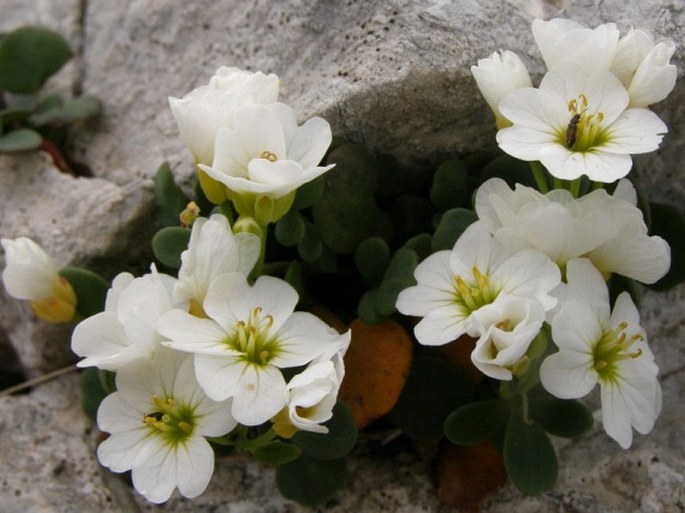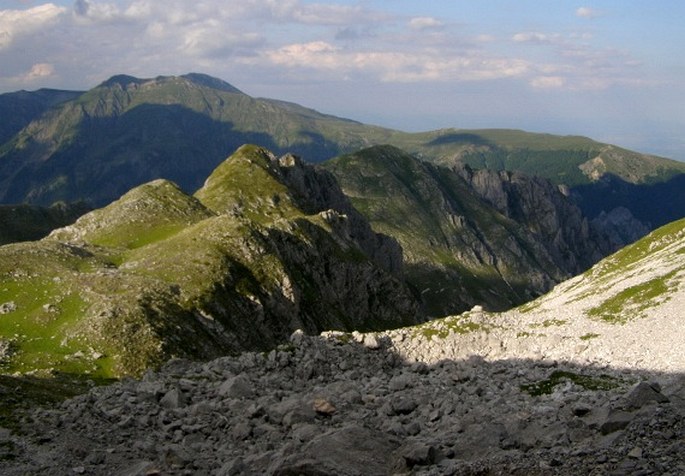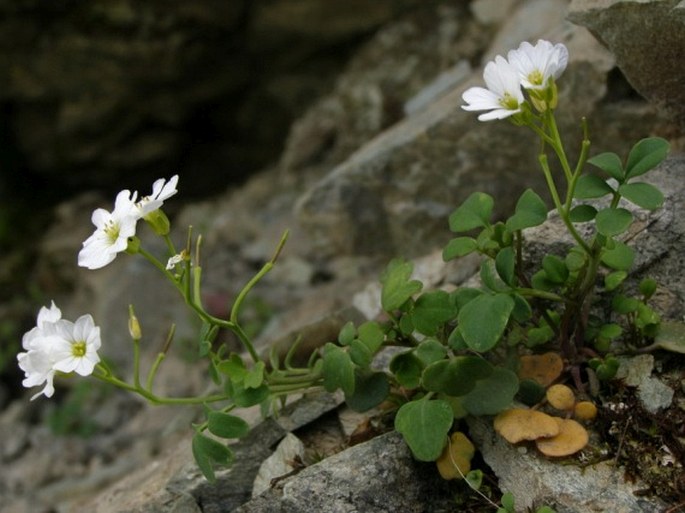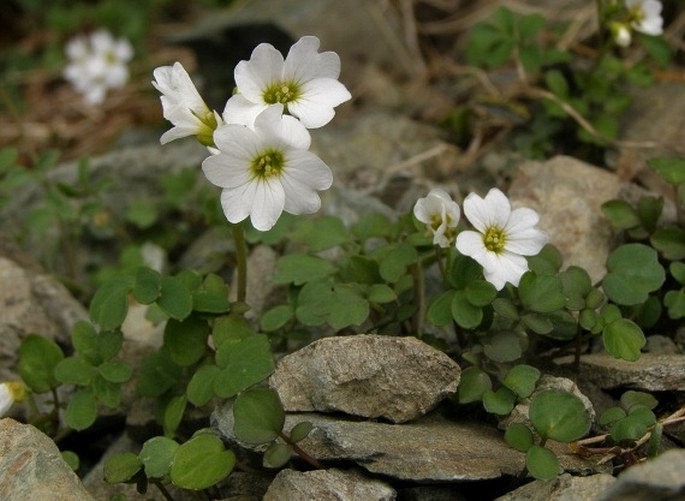Syn.: Cardamine bergeriana Andrz. ex DC., Cardamine corydaloides Guss. ex Spreng., Cardamine croatica Schott, Nyman et Kotschy, Cardamine glauca f. pumila (O. E. Schulz) Jovan.-Dunj.
Family: Brassicaceae Burnett

Distribution: Mountains of the Balkans from Bulgaria (Rila, Pirin, Stara Planina) and northern Greece to the Velebit Mts. in Croatia. It also occurs in southern Italy (Calabria, Sicily) and rarely in the South Carpathians in Romania.
Ecology: It grows in rocky slopes, screes, rock crevices and in sparse grasslands, in gravelly, shallow soils. On limestones, dolomites and also on siliceous bedrock, between 1500–2600 m a. s. l.


Description: An annual or biennial, glabrous, glaucous, (5–)12–25 cm tall herb. The leaves are imparipinnate, the lowest with 0–1 pairs of lateral leaflets, terminal leaflet entire to 3-lobed. Upper leaves with 2–5(–7) pairs of lateral, linear to obovate leaflets. The sepals 2–3 mm long, the petals 5–8 mm long, deeply emarginate, white. The fruit is a siliqua, (10–)20–35 × (1–)1.5–1.8 mm large, secund.

Confusion: There are three similar species in the areal of Cardamine glauca – Cardamine carnosa Waldst. et Kit. with a hairy siliqua; Cardamine plumieri Vill. with rounded or slightly emarginate petals and not secund infructescense; Cardamine pancicii Hayek is endemic to the Kopaonik Mts. in Serbia, it is usually perennial and the lowest leaves have 2–5 small lateral leaflets.

These images were taken in Albania, the Prokletije Mts.: Shkëlzen, Maja e Zeze, Maja e Popljuces (date: 4. to 10. 7. 2011).


